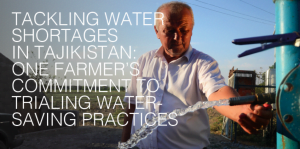- Who we are
- What we do
In just over 10 years we have become the world’s largest cotton sustainability programme. Our mission: to help cotton communities survive and thrive, while protecting and restoring the environment.
- Where we grow
Better Cotton is grown in 22 countries around the world and accounts for 22% of global cotton production. In the 2022-23 cotton season, 2.13 million licensed Better Cotton Farmers grew 5.47 million tonnes of Better Cotton.
- Our impact
- Membership
Today Better Cotton has more than 2,700 members, reflecting the breadth and diversity of the industry. Members of a global community that understands the mutual benefits of sustainable cotton farming. The moment you join, you become part of this too.
- Associate Membership
- Civil Society Membership
- Producer Organisation Membership
- Retailer and Brand Membership
- Supplier and Manufacturer Membership
- Find Members
- Member Monitoring
- Better Cotton Platform
- myBetterCotton
- Resources – Better Cotton Conference 2022
- Complaints
- Whistleblowing
- Safeguarding
- Get Involved in the Better Cotton Programme
- Thank you for contacting us
- Better Cotton’s Data Privacy Policy
- Log in
- Members’ Area
- Request for Proposals
- Better Cotton Cookie Policy
- Web Reference
- Measuring Cotton Consumption
- How to Implement the Chain of Custody Standard
- Resources – Better Cotton Conference 2023
- Certification Bodies Old
- Latest
- Sourcing
- Latest
The founding premise of Better Cotton is that a healthy sustainable future for cotton and the people that farm it is in the interests of everyone connected with it.
Let us help you find what you’re looking for
Results for {phrase} ({results_count} of {results_count_total})Displaying {results_count} results of {results_count_total}
Approximately half a billion people around the world currently face severe water scarcity, and nearly half of the global population lives in regions where freshwater is polluted. Caring for our water resources — both locally and globally — is one of the biggest sustainability challenges of our times. At the Better Cotton Initiative, we believe that solutions require a water stewardship approach where individual and collective actions benefit both people and nature.
On World Water Day 2021, we want to highlight the great work that BCI’s partners, cotton farmers, and farming communities around the world are doing to tackle water challenges in cotton.
Water and cotton
While cotton is often labelled a ‘thirsty crop’, it is actually relatively drought tolerant. The problem is that it is often grown in arid environments where it cannot be rainfed, making farmers reliant on water-intensive irrigation systems. As a result, cotton production can impact freshwater resources in a few ways:
- The quantity of water used for irrigation — both surface water and groundwater.
- Water quality due to the use of agrochemicals, including pesticides and fertilisers.
- The use of rainwater stored in land.
Freshwater is a shared and limited resource, making water scarcity and pollution major global issues.
What is BCI doing?
BCI’s on-the-ground partners work with millions of cotton farmers across the globe, providing training on more sustainable farming practices. A key focus of our work, and one of the seven Better Cotton Principles and Criteria, is water stewardship. We seek to provide farmers and farming communities with the tools and techniques to use water in a way that is environmentally sustainable, economically beneficial and socially equitable. This means:
- Using freshwater within sustainable limits: Ensuring there is enough water in nearby river basins or aquifers to support the surrounding ecosystem and population.
- Ensuring maximum water productivity: Reducing the quantity of water consumed, or the pollution created, per unit of cotton production.
- Sharing water equally between uses and users both locally and globally: For example, the WAPRO framework helps farmers, communities and local authorities to map water resources and usage. It encourages collaboration to conserve water, preserve water quality (by protecting it from pesticides and fertilisers, for example), and share water resources fairly.
Seeing the results
As a result of water stewardship training and guidance, many BCI Farmers are now mapping water resources, managing soil moisture, managing water quality and applying efficient irrigation practices.
Looking at BCI’s 2018-19 cotton season results, we see that BCI Farmers in four of the countries we analysed (China, India, Pakistan and Tajikistan) used less water than comparison farmers. For example, BCI Farmers in Pakistan used 15% less water than farmers who didn’t participate in BCI training sessions.
Stories from the field
 Learn how one BCI Farmer’s commitment to trialling innovative water-saving practices led him to install Tajikistan’s first tubular irrigation system, saving almost two million litres of water in just one cotton season. Read Sharipov’s story.
Learn how one BCI Farmer’s commitment to trialling innovative water-saving practices led him to install Tajikistan’s first tubular irrigation system, saving almost two million litres of water in just one cotton season. Read Sharipov’s story.
 Find out how an educational game of Snakes and Ladders, introduced to 24 schools in cotton farming communities across Gujarat, encouraged children to share positive messages about sustainable water use with their families and communities. Learn more.
Find out how an educational game of Snakes and Ladders, introduced to 24 schools in cotton farming communities across Gujarat, encouraged children to share positive messages about sustainable water use with their families and communities. Learn more.
You can learn more about BCI’s approach to water stewardship in the Better Cotton Principles and Criteria.


